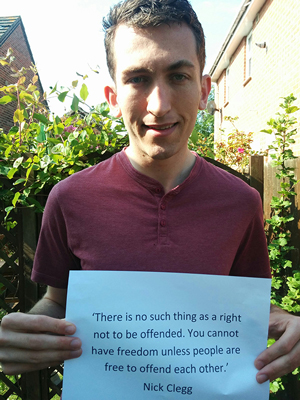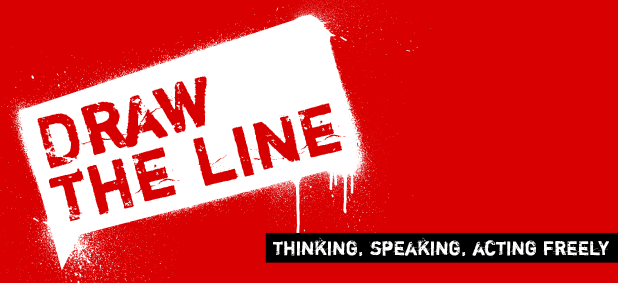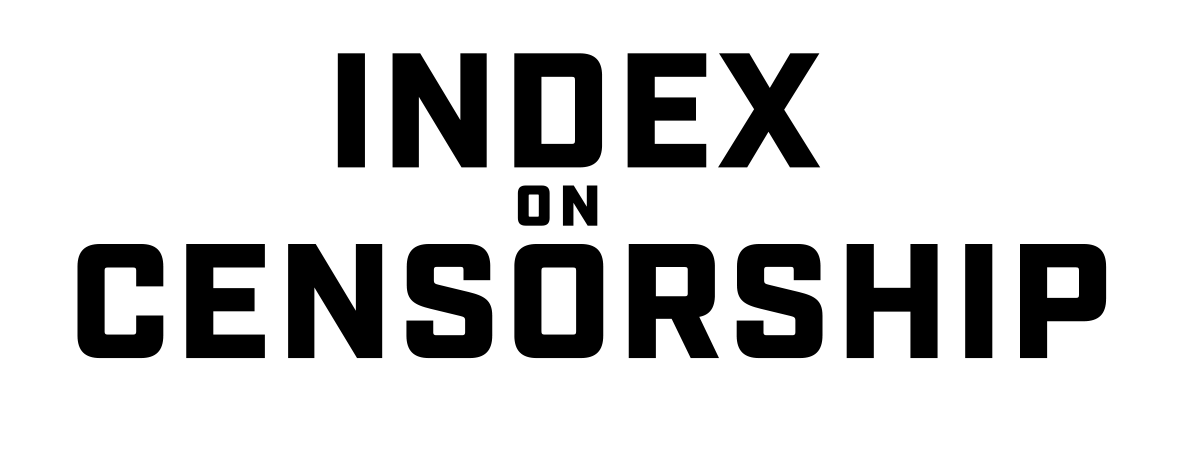17 Aug 2015 | mobile, News and features, United Kingdom, Youth Board
The new cohort of the Index on Censorship youth advisory board was launched last month. The board is already participating in discussions on Facebook.
Members of the board were asked to write a blog discussing one free speech issue in their country. The resulting posts exhibit a range of challenges to freedom of expression globally, from UK crackdowns on speakers in universities, to Indian criminal defamation law, to the South African Film Board’s newly published guidelines.
In the first of a series of posts, youth board member Matthew Brown explores mass surveillance in the UK.

Matthew Brown is a member of the Index youth advisory board. Learn more.
I don’t often begin writing by quoting Herman Goering but on one account he was worryingly accurate. Goering stated that: “The people can always be brought to the bidding of the leaders. All you have to do is tell them they are being attacked and denounce the pacifists for lack of patriotism and exposing the country to danger. It works the same way in any country.”
Increasing levels of surveillance are often justified as essential in protecting us from imminent attack but the recent revelation that GCHQ spied illegally on Amnesty International, an organisation relying upon the secrecy of their communications with human rights defenders, demonstrates the extent to which state surveillance methods are now out of control.
It is easy to scorn states known for their dictatorial regimes but our society has only progressed to its current position through holding the state to account. If we fail to continue to do so, then the slide towards a world in which freedom of expression is restricted at any given moment the government decides appropriate is inevitable. The interception of the correspondence of NGOs raises the worrying question of how these organisations can continue their crucial work if their confidential correspondence is likely to end up out of their hands.
Matthew Brown, UK
Related:
• Tom Carter: No-platforming Nigel
• About the Index on Censorship youth advisory board
• Facebook discussion: no-platforming of speakers at universities
8 Jun 2015 | mobile, Youth Board

Over the past few months, the Index on Censorship Youth Advisory Board has been coming together to ask difficult, yet essential questions; attempting to spark and promote thought provoking debates and engage the general public in societal issues and conflicts that affect us all.
The topics we have explored in #IndexDrawTheLine can be found below. You can follow the links to see the youth board’s full coverage.
- Returning to the issue of extremism for our penultimate discussion, we looked at whether or not it has a place on campus, arguing that: “Universities should be places where young people have the freedom to learn, debate and use their knowledge to challenge guest speakers.”
But the conversation doesn’t stop there. We have to keep encouraging open debate and a level of transparency in a world full of censorship. It is imperative as new threats to free speech arise each day, and old threats recur. It is the responsibility of all of us to provide a voice for the voiceless, represented and unrepresented alike.
To join in future discussions, follow the #IndexDrawtheLine hashtag on Twitter.
This article was posted on 8 June 2015 at indexoncensorship.org
31 Mar 2015 | Campaigns, mobile, Youth Board
Index on Censorship is recruiting for its next Youth Advisory Board.
The new board will hold the position for six months from June-November 2015, have the chance to participate in monthly Google Hangout On Air discussions about current freedom of expression issues around the world and the opportunity to write articles to promoting the #IndexDrawtheLine social media debate.
We are looking for enthusiastic young people, aged between 16-25, who will be committed to attending monthly meetings, be quick to respond to emails and who will contribute fresh and interesting ideas to the discussion. You do not need any previous experience to apply.
For information about the current youth board, click here.
Find out more about the Index Youth Advisory Board below:
What is the youth board?
The youth board is a specially selected group of young people aged 16-25 who will advise and inform Index on Censorship’s work, supporting our ambition to fight for free expression all around the world and ensuring our engagement with issues relevant to tomorrow’s leaders.
Why has Index started a youth board?
Index on Censorship is committed to fighting censorship not only now, but also in future generations, and we want to ensure that the realities and challenges experienced by young people in today’s world are properly reflected in our work.
Index is also aware that there are many who would like to commit some or all of their professional lives to fighting for human rights and the youth board is our way of supporting the broadest range of young people to develop their voice, find paths to freely expressing it and potential future employment in the human rights/media/arts sectors.
What does the youth board do?
Board members meet once a month via Google Hangout to discuss the most pressing freedom of expression issues of the moment and participate in research activities.
There is also the opportunity to get involved with events such as debates and workshops for our work with young people and events such as our annual Index Freedom of Expression Awards and Index magazine launches.
How do people get on the youth board?
Each youth board will sit for a term of 6 months. Current board members are invited to reapply up to one time. The board will be selected by Index on Censorship in an open and transparent manner and in accordance with our commitment to promoting diversity.
Why join the Index on Censorship youth board?
You get the chance to be associated with a media and human rights organisation and have the opportunity to discuss issues you feel strongly about with Index and with peers from around the world. At each board meeting we will also give you the chance to speak to someone senior within Index or the media/human rights/arts sectors, helping you to develop your knowledge and extend your personal networks. You’ll also be featured on our website.
Meet the current Youth Advisory Board here
24 Feb 2015 | Draw the Line, mobile

With the rise of Islamic State (IS) in the Middle East, people across various platforms of social media are sharing videos of brutal killings by the terrorist organisation. This month’s #IndexDrawTheLine question is: How much is too much?
Royal Jordanian Air Force pilot Muath Al Kasasbeh was captured by IS at the end of last year, and a graphic video was shared on the internet earlier this month, which appeared to show the pilot suffering a barbarous death.
In last year’s Gaza-Israel conflict, various graphic images were shared on social media. One incident that stood out was the case of four Palestinian children who were reportedly killed by Israeli shells whilst playing on a beach. Photographs and videos depicting the dead bodies of these children were shared on various networks.
Some would argue that sharing graphic content is a means of revealing the truth, helping to raise awareness of what actually happens to the people involved in these situations and how serious the issue is. Others would say that refraining from sharing these videos would stop terrorists from achieving their goals, respect those who were killed and perhaps remember them in a different way.
With all the graphic videos and photographs shared on social media, and the wider internet, where should we draw the line? Does this differ depending on who shares the content: terrorists? passers-by? news stations?
Tweet your response to #IndexDrawtheLine to join the conversation.
This article was posted on February 24, 2015 at indexoncensorship.org


